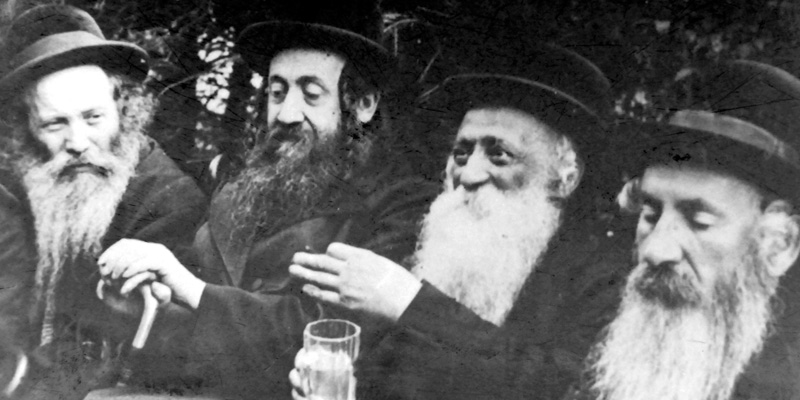
An Italian accent, a suit, and a Tommy gun — it’s the classic stereotype of the classic Prohibition bootlegger that’s been glorified in popular culture for decades. But there was actually another, larger group of people who had more influence on where people got their illegal drinks: the Jews.
It’s impossible to know the exact number of criminals involved in bootlegging during Prohibition, but historians believe that fully 60 percent were Jewish. Just 30 percent were Italian, and only around 10 percent were Irish, Daniel Okrent, the author of “Last Call: The Rise and Fall of Prohibition,” tells VinePair. The bootlegger stereotypes, it turns out, are more than a little misleading.
The foundation for the rise of Jewish bootleggers was carved out long before Prohibition was enacted. Long before the ban of alcohol, Jews were deeply involved in the alcohol business. “At first, alcohol offered a way for American Jews to present themselves as the best sorts of Americans, as the ones who consume alcohol regularly but are not drunkards, who participate in the economy in ways that benefit communities and society at large,” Marni Davis, author of “Jews and Booze: Becoming American in the Age of Prohibition,” writes.
Then Americans’ beliefs about alcohol started to shift. Jews for the most part were staunch opponents of Prohibition. First off, wine is an important component of religious practice; it’s blessed and consumed in Jewish homes on Friday night and Saturday morning as part of the Sabbath meal. Second, alcohol was big business. Finally, and importantly, Prohibition was part of a Christian and xenophobic movement in America that wanted to keep immigrants and other religions like Judaism and Catholicism out of the mainstream, according to historians. The American Jewish Committee, B’nai B’rith, and other Jewish organizations opposed Prohibition because of its larger implications. They were “legitimately concerned that the broader agenda of an array of organizations pushing Prohibition, that included the Ku Klux Klan, threatened civil liberties and economic freedoms more generally,” Allan Nadler, a professor of religious studies at Drew University, writes in Tablet Magazine.
Opposing Prohibition before it was enacted eventually turned into the outright breaking of the law after it was enacted. Take the example of a single Los Angeles congregation. In the first year of Prohibition, 1920, this single Los Angeles congregation increased from 180 families to 1,000 families. Those families, along with every Jewish adult in the country, were allotted 10 gallons of wine a year for sacramental purposes. By 1924, 2.9 million gallons were given out, hinting at a surge in the Jewish population and leading a publication called American Hebrew to write an article commenting on the “rapid growth of Judaism.”
The apparent growth, however, was a ruse. Thanks to Section 6 of the Volstead Act, the enforcement legislation of Prohibition, the ban on alcohol was removed for wine used for religious sacraments. This meant that rabbis and priests could legally possess wine. And while this led a number of priests to turn bootlegger, it led to even more bootlegger rabbis. While the government could easily determine whether someone was actually a priest, the American rabbinate was much more loosely organized, and way less supervised than the Catholic Church. “If a man said he was a rabbi, in other words, who’s to say he wasn’t?” writes Matthew Rowley in his book “Lost Recipes of Prohibition: Notes from a Bootlegger’s Manual.” He adds, “Counterfeit rabbis claimed new, robust congregations.”
In 1926, a federal grand jury investigated 600 rabbis in New York City for greatly exaggerating the number of people in their congregations. The rabbis had a huge amount of wine in distribution centers, where Jews could pick up their wine without forcing their rabbis to act as distributors. During the investigation, the amount of wine pulled from the sacramental wine storage locations went from one million gallons in 1925 to just over 6,000 gallons in 1926. Clearly, devout Jews weren’t the only ones taking wine out of storage.
Jewish bootlegging wasn’t limited to providing sacramental wine to recreational revelers. The Jewish owner of Seagram’s at the time, Samuel Bronfman, had Jewish bootleggers floating so much illegal booze into America over Lake Erie that it became known as the “Jewish Lake.” Jewish bootleggers were so prolific, in fact, that around half the bootleggers who fueled America with alcohol during Prohibition were Eastern European Jews, Daniel Okrent, author of “Last Call: The Rise and Fall of Prohibition,” told Forward magazine.
It wasn’t all rabbis and rabbi pretenders. Meyer Lansky and Bugsy Siegel, one of the most notorious mobsters of the 1900s, ran the Bugs and Meyer Mob, which later became a part of Murder Incorporated, the enforcement arm of the Italian Mafia. Murder Inc. was a crucial component of organized crime’s bootlegging activities.
Pushing gallons of sacramental wine to people who weren’t Jewish never reached the cultural cool of hard liquor bootlegging. The demand for a drink knows no bounds, though. Rabbis, people pretending to be rabbis, and Jewish bootleggers worked the system to help keep religious wine in people’s hands.
